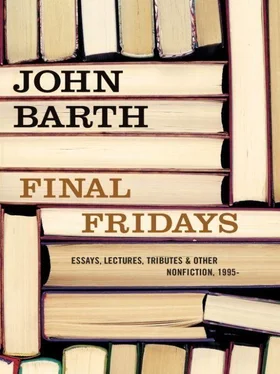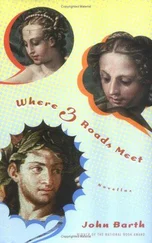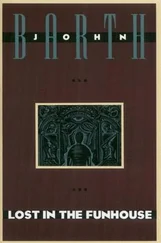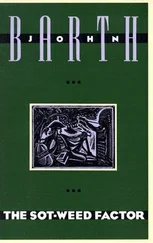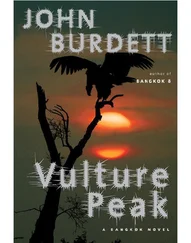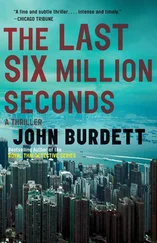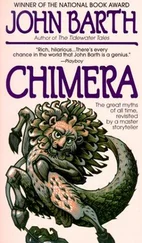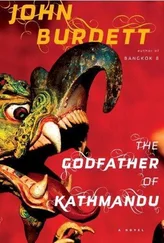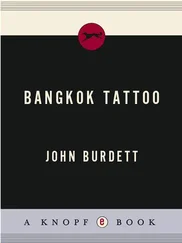Good luck, electronic fictioneers: Golf courses and ski slopes last longer than that; may the products of your lively medium fare as well.
“Two more” in two senses: 1) This essay-collection has been foreworded already; and 2) its forerunner, Further Fridays , included a section called “Four Forewords”—to my first five published novels, on the occasion of their later reissue as trade paperbacks by Doubleday’s Anchor Press. 1
TIME WAS WHEN the publishers of good-quality books with less than best-seller appeal could hope at least to break even by keeping such works in print and selling a modest number of copies per year over an extended period, meanwhile deducting for tax purposes the cost of warehousing the unsold copies. The U.S. Supreme Court’s unfortunate “Thor Tool Company” ruling in 1979 2declared that practice illegal, with the unhappy result that in America nowadays, a book either makes its publisher a profit in a hurry or is fed to the shredder — just as, in commercial television, a high-quality drama series may be canned because its audience, while sizeable, is less so than that of some competing network’s offering: bad news for the culture in both cases. Periodic attempts by such organizations as the Authors Guild and PEN (Poets, Essayists, and Novelists) to overturn that infelicitous court ruling have thus far been unsuccessful; until they succeed, if ever, the slack has been taken up somewhat by university presses and others outside the “trade,” where volumes of poetry, essays, and good-but-non-“commercial” fiction may find sanctuary, and by the larger houses’ “trade paperback” lines: Doubleday’s Anchor Press, Random House’s Vintage Books, Houghton Mifflin’s Mariner Books, et cetera.
A number of my own past productions have had the good fortune to lead second lives in such editions, for which their new publisher often requests a foreword. Hence the “Four Forewords” aforementioned, and hence the two here following: one to the large and complex novel LETTERS , first published by Putnam in 1979; the other to the smaller, more straightforward Sabbatical: A Romance , from the same publisher three years later. Neither novel was a commercial success; happily for their author, both were subsequently reissued (in 1994 and 1996, respectively) by the University of Illinois’ excellent Dalkey Archive Press, to continue their trickle of annual sales. After all, one reminds oneself, long-haul trickles can have large effects: e.g., the Chesapeake Bay and its tidal tributary outside my workroom window, both formed in part by the eons-long trickles of the last Ice Age’s retreating glaciers….
“Another interminable masterpiece,” my comrade-in-arms William H. Gass has called the novel here prefaced. I like that.
“Irritating and magnificent,” says the critic Zack Bowen of the story’s ground-plan and overall conceit. 3I like that, too.
Gore Vidal, on the other hand (Or was it Tom Wolfe? One of those knee-cappers, anyhow, who write so entertainingly on other matters but often get literature all wrong), in a general diatribe against fictive Fabulism, Postmodernism, you name it, has declared that the movement “culminates in John Barth’s novel LETTERS , which even its author admits is unreadable.”
Author admitteth no such thing. Author happeneth to believe the novel enormously readable, as well as enormous in other respects. Complex? Well, yes. Complicated? For sure. Designed and constructed with a certain rigor? You bet: As in pro football and the knitting of argyle socks, rigor in novel-writing is the zest of complexity; the aim is to bring it off with brio, panache, even grace—“passionate virtuosity,” I’ve heard it called — never dropping the ball or a stitch. Not for every taste, no doubt; but in the author’s opinion (15 years now after the novel’s first publication) there is in LETTERS sufficient humor, range of passions, historical seriousness, and bravura theater to make it a rousing read despite its elegant construction, if “despite” is how it need be.
But let’s hope it needn’t.
HERE’S HOW THE thing came to be written:
• Although its action takes place through seven months of 1969 (seven years before the U.S. Bicentennial, which some Americans at the decade’s turn, myself included, were beginning to note the approach of), it was in 1973 that the novel itself moved from accumulated project-notes to the front burner of my concerns. That’s the year when the American 1960s really ended: with the Israeli/Egyptian Yom Kippur War and the consequent Arab oil embargo; with the humiliating wind-down of our Vietnamese misadventure, which had fueled and focused countercultural protest; with the leveling off and subsequent erosion of U.S. economic prosperity, which had grown with all but uninterrupted vigor through the generation since Pearl Harbor — an erosion that, for the Baby Boomers at least, continues yet. Not a bad benchmark, in short, ’73, for the beginning of the end of “the American Century,” as under the Nixon/Kissinger administration the nation ground unenthusiastically toward its 200th birthday — an event that I’d had my eye on, novel-wise, for some while already. This for the reason that
• I myself had passed Dante’s mezzo del cammin di nostra vita and begun the second half of my projectible life-span, actuarially and otherwise. A 20-year first marriage had ended in divorce, and at age 40 I had married again (the second union, as of this writing, happily older than its predecessor and going for the distance). In those first 20 years of adulthood I had sired and co-parented three children, and by 1973 was managing them through college. I had contrived to ascend the American academic ladder from teaching-assistantship to endowed-professorship while at the same time writing and publishing my first half-dozen volumes of fiction, and my literary offspring had earned some degree of critical notice — sometimes hedged, like the quotes above. Indeed, the first and fifth of them had been bridesmaid finalists for the National Book Award in fiction, and the sixth a bigamous bride: A divided jury named Chimera co-winner of the 1973 prize.
• All things considered, a not-inappropriate time to take stock, as the USA was warming up to do — perhaps via a Bicentennial novel that would concern itself with (and be the first fruit of) second halves and “second revolutions,” in my country’s history 4as well as in my personal and professional life. What I aimed to do — when by 1973 those aims had clarified themselves — was write a seventh novel that would address these bicentenary, second-revolutionary themes and at the same time be a sequel to all six of its forerunners, carrying representative characters from each into the second cycles of their several stories — without, however, requiring that its readers be familiar with those earlier works.
• Moreover, two decades of reading, writing, and teaching literature had bemused me with the three main senses of our English word letters , to wit:
1. Alphabetical characters, those 26 atoms that in their infinite supply and innumerable but finite recombinations comprise the written universe.
2. Epistolary missives, that homely but splendid technology of human telecommunication in the 18th and 19th centuries especially — the golden era of general bourgeois literacy and, not coincidentally, of the novel as a popular medium of art and entertainment. The English novel, in particular, had from the first an almost proto-Postmodern awareness of itself as words on paper, a document imitating other sorts of documents, especially letters; even where its form was not epistolary, its plot often turned on letters mislaid, misdelivered, misread or miswritten, intercepted or purloined. By 1973, telephony had all but supplanted the writing of personal letters, as film- and television-watching had all but supplanted novel-reading — Adieu, dear media! Such later technologies as e-mail lack the distinctive element of individual penmanship (I kiss your handwriting, love, in lieu of your dear hand); even telefaxed longhand isn’t her ink, on her personal stationery, a souvenir of herself…. And
Читать дальше
